Background
Shey-Phoksundo National Park (SPNP), declared in 1984, is situated in the trans-Himalayan region of North-west Nepal, covering an area of 3555km square, which extends into Dolpa and Mugu districts of Karnali province. SPNP is the largest National Park in Nepal. Conservation of highland ecosystems, unique landscapes, endangered wild flora and fauna, historical, and cultural heritages are some major objectives behind the announcement. An area of 1349 km square surrounding the park was declared a buffer zone in 1988. The park management authority and local people jointly initiated community development conservation activities and manage the natural resources in the buffer zone. The National Parks and Wildlife Conservation Act, of 1973 has made a provision of plowing back 30-50% of the park's revenue into community development and conservation of the buffer zone. Biodiversity conservation, sustainable community development, and wise use of natural resources for the well-being of the local community by reducing park-people and people-wildlife conflict are the major objectives to establishing the buffer zone.
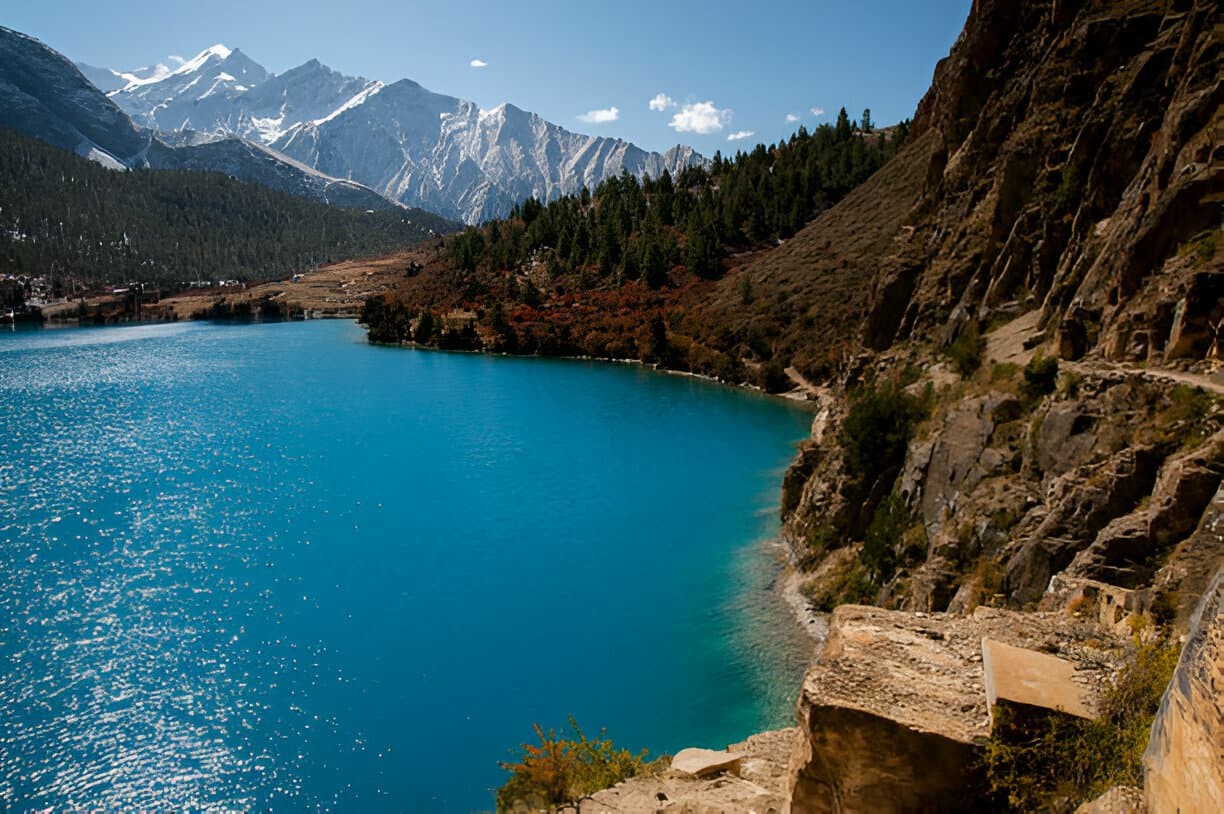
The park contains numerous wetlands, which provide home-ground to different kinds of migratory avifauna. Phoksundo Lake, which is internationally significant, and is also listed under the Ramsar site on 23 September 2007. This lake ranks second deepest (145m) and second largest (4.94km square) lake compared to other lakes in the country. However locals say it is the deepest lake in the country because the government didn't properly examine the depth of the whole lake, they only examined it from the side.
Cultural Insights
Phoksundo Lake Trek isn't just about a beautiful, pristine turquoise lake and stunning landscapes; it is a journey to the heart of Bon culture, one of the oldest spiritual traditions of the world. The Dolpo region is one of the last strongholds of this ancient religion in Nepal, which showcases Buddhism and is deeply rooted in the nature of worship and shamanistic practices.
You will see people practicing the Bon religion when you reach remote Ringmo village. You will see colorful flags, ancient chortens (stupas) and monasteries. The Thasung Tsoling Gonpa, a Bon monastery near Phoksundo Lake, is a must-visit. It’s a place of serenity and spirituality, where you can witness monks chanting and performing rituals that have remained unchanged for centuries. This Gonpa was actually made to protect wild animals from hunters who came near the lake to drink water however, now, it has become a historical place because of its history and significance to the place. A Lama is always available in this Gonpa with whom people can talk and learn more about the Bon religion
Remember, a smile and a respectful “Tashi Delek” (a traditional greeting) can go a long way in connecting with the locals.
Phoksundo Lake Trek Itinerary:
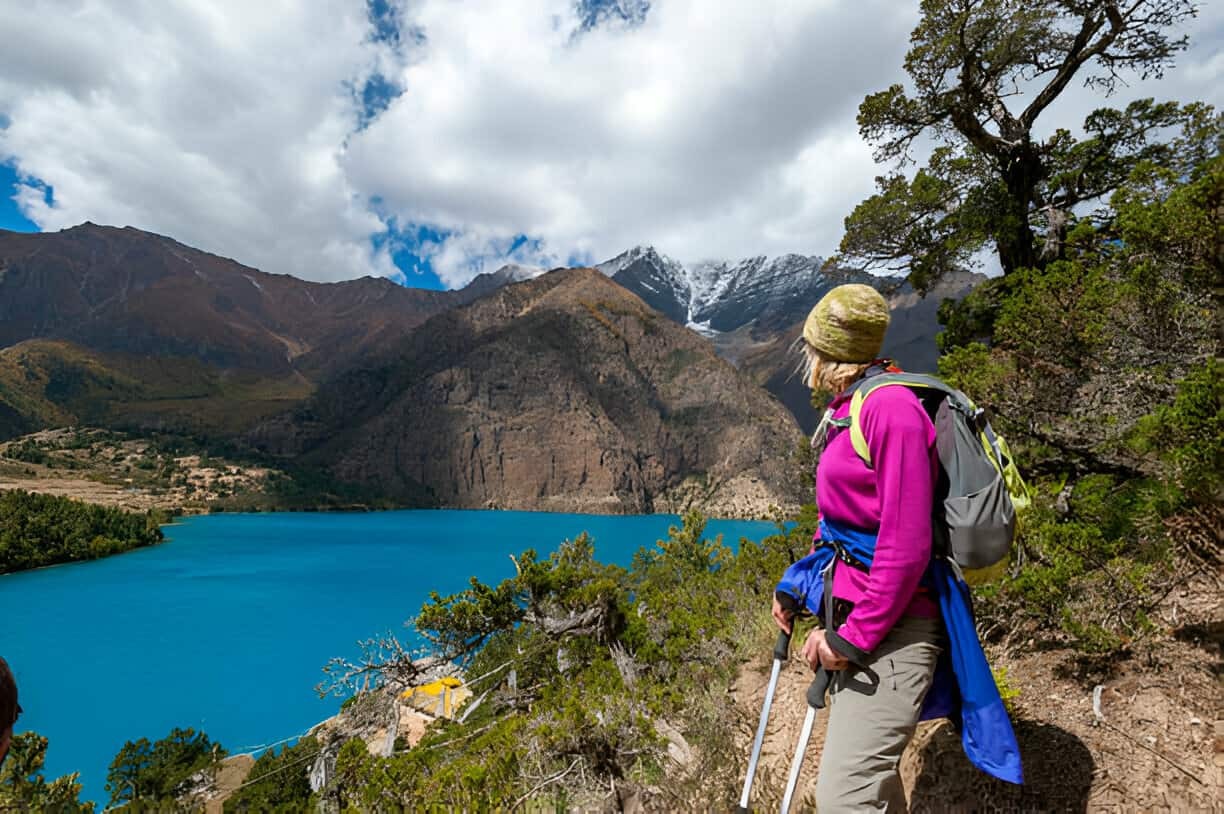
The Phoksundo Lake Trek typically takes around 10 days for international travelers depending on the pace and preference of the trekkers. Below we have a sample outline itinerary from which you will get an idea of how to reach Phoksundo Lake.
- Day 01: Arrival in Kathmandu 1400 meters
- Day 02: Fly to Nepalgunj - Overnight Stay
- Day 03: Fly Nepalgunj to Juphal and Trek to Dunai (3 hours)
- Day 04: Trek Dunai to Chhepka, 15km (7-8 hours)
- Day 05: Trek Chhepka to Saijol (6-7 hours)
- Day 06: Trek Saijol to Ringmo Village and Phoksundo Lake, 9km (4 hours), Explore Thasung Tsoling Gonpa
- Day 07: Explore Phoksundo Lake viewpoint , Overnight at Ringmo Village
- Day 08: Trek Ringmo Village back to Chhepka (6-7 hours)
- Day 09: Trek Chhepka to Juphal (5-6 hours)
- Day 10: Fly back to Kathmandu via Nepalgunj
- Day 11: Departure from Kathmandu
For a detailed itinerary with various options and routes Click here.
Note: The entire Dolpa district is divided into two regions, i.e., lower and upper. The upper limit of lower Dolpa is up to Phoksundo Lake of Phoksundo rural municipality. This trekking area lies in the restricted area of Nepal, for which you will require a restricted permit. A minimum of two trekkers are required to issue a permit for this area. A group trekking permission can be issued only through a recognized trekking agency in Nepal
Famous Dolpo Trek Packages:
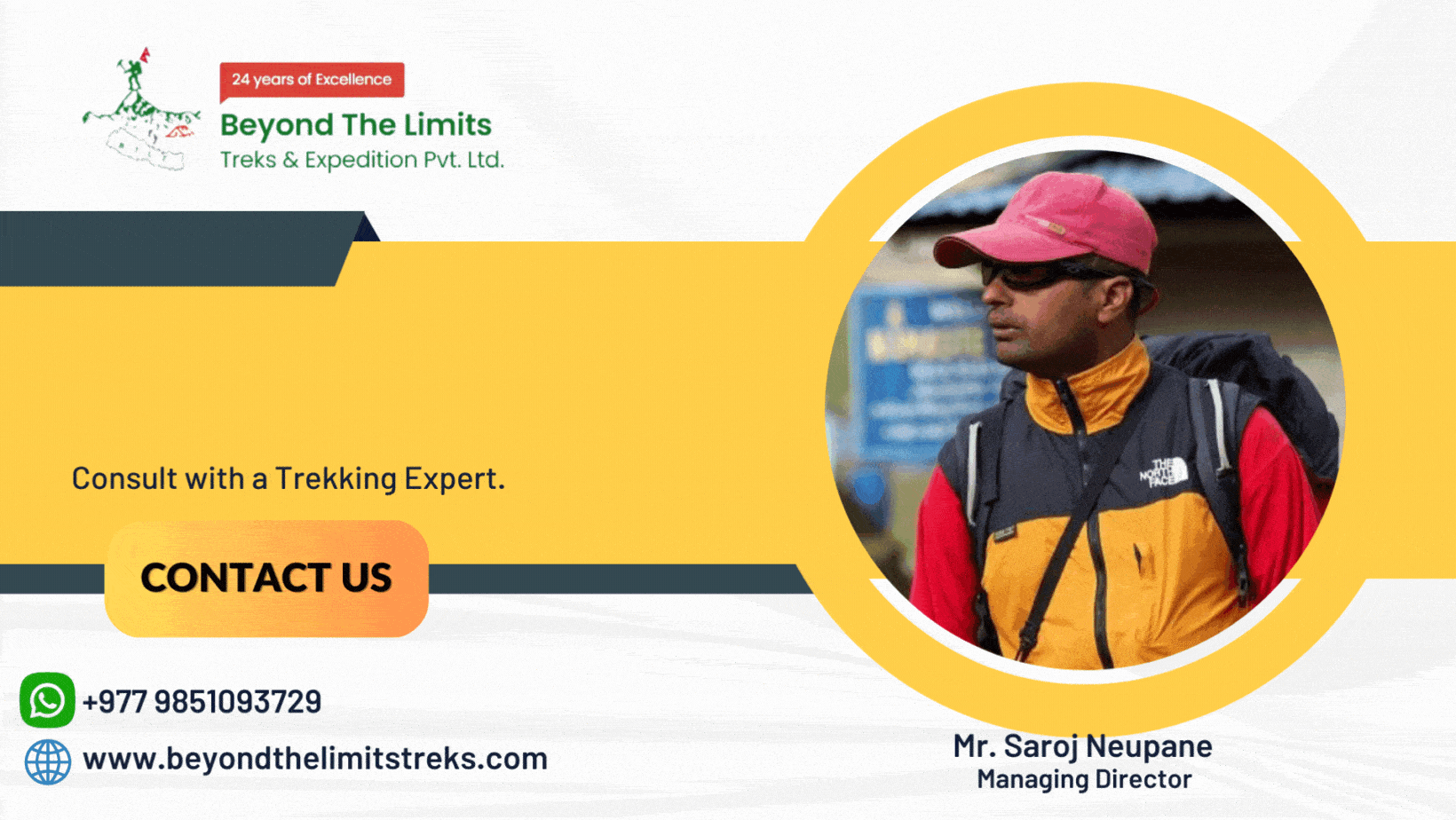
How to get to the Shey-Phoksundo National Park:
Transportation and Flights:
Going to the Dolpo region is quite tricky compared to going on treks like Annapurna Base Camp and Langtang Valley Trek because of long-distance, transportation and weather-dependent flight.
1) Flights:
Traveling by flight to Dolpo is a more convenient way. First, you would have to take a flight to Nepalgunj (50 minutes) and the next day you would take a flight to Jhupal Airport(35 minutes) which is in Dolpa.
Please be informed that booking both flights, Kathmandu or Pokhara to Nepalgunj and Nepalgunj to Jhupal on the same day is risky because flights to Jhupal are always in the morning because of weather conditions, and if the flight to Nepalgunj get delayed then you will lose your flight to Jhupal. You can understand that Flights to Jhupal are the same as flights to Lukla which are highly dependent on weather if you have been informed about Everest Base Camp Trek.
Kathmandu to Nepalgunj to Jufal Airport Dolpa and trekking, sometimes direct flight from Kathmandu to Jufal.
Pros:
Cons:
2) Road Transport:
The roadway is an alternative method to reach the Dolpo region for Phoksundo Lake Trek if the flight is canceled. The flight to Nepalgunj happens throughout the day so even if one flight is canceled your seat would be changed to another flight so it would not be a problem to reach Nepalgunj. You just have to be sure your flight is not the last flight of the day, just in case it gets canceled there will be no other alternative.
As I mentioned above flights to Jhupal get canceled because of weather conditions there is an alternative roadway for you to drive to reach Sulighat to start your Phoksundo Lake trek. We highly recommend you to go on a jeep so here we will only discuss how to get there in a jeep.
Nepalgunj to Sulighat will take around 15-16 hours, so it would require one and a half days to reach Sulighat. On the first day, you would take a flight to Nepalgunj and book a private jeep. You will start your drive from Nepalgunj and pass various districts like Surkhet, Jajarkot, Rukum, and all the way to Dolpo. We will not reach Sulighat on the same day so we will take an overnight stay in a place called Tallo Bahar or Tribeni depending on our drive. Then tomorrow morning we will wake early in the morning and drive to Sulighat to start our trek the same day. You can have breakfast along the way. The drive to Sulighat is truly mesmerizing with changing landscapes and the Bheri River flowing in the side. With a positive mind, this drive could be a plus point in the adventure ahead. The landscape and villages you will see by driving will not be the same as going by plane.
By Bus: Kathmandu to Nepalgunj to Tallubazar and Tallubazar to Dolpa in exchange for another bus or jeep. From Jumla to Chaurikot, Dolpa you could drive to the park by jeep in fair weather.
Pros:
- Landscape Scenery and adventurous experience
Cons:
- A Long Journey in Vehicle
Accommodation
 Accommodation in the Dolpo region is basic. Phoksundo Lake Trek is one of the off-the-beaten trails of Nepal, here you would have a chance to see real Nepal with local culture and their way of life. Compared to 10 years ago, the level of accommodation has significantly increased but it is still basic. Along the trail, you will be spending overnight in simple teahouses that provide shared rooms with basic bedding. The bathroom is shared in every teahouse and hot showers are very rare. The idea of a hot shower is that you boil water, take that water in a bucket, and pour it over your body yourself.
Accommodation in the Dolpo region is basic. Phoksundo Lake Trek is one of the off-the-beaten trails of Nepal, here you would have a chance to see real Nepal with local culture and their way of life. Compared to 10 years ago, the level of accommodation has significantly increased but it is still basic. Along the trail, you will be spending overnight in simple teahouses that provide shared rooms with basic bedding. The bathroom is shared in every teahouse and hot showers are very rare. The idea of a hot shower is that you boil water, take that water in a bucket, and pour it over your body yourself.
Though the accommodation is very basic, every teahouse has installed wifi, so you can tell they know their customer's necessities. Local accommodations and services are available at Juphal, Dunai, Sulighat, Syangta, Chhepka, Rechi, Saijol and Ringmo Village.
Rooms are designed in a way that multiple people can sleep in one room so, you would find two beds in a room. Getting a private room on this trail is very rare if you would like to have a private room you would have to pay extra. However, accommodation in Nepalgunj is nice, with standard hotels with wifi, hot showers, and meals.
It is advised to carry your own sleeping bag for this trek because the bedding might not be warm enough during colder months. And you would feel more comfortable in your own sleeping bag.
Food and Water
 The teahouses here offer a limited but nourishing food. Nepali Traditional food Dhal-Bhat is the most common food in this trekking region. If you are not a huge fan of Dhal-Bhat, then you will have a very hard time on this trek. Every teahouse makes Dhal-Bhat for dinner with which you would also have some vegetables and if you like to add an egg you can add that too. To put it simply, there is no menu in the teahouse for you to choose from; you just order what they have in the house, and they will make it. Don't expect foods like Pizza, Momo, Spaghetti, etc.
The teahouses here offer a limited but nourishing food. Nepali Traditional food Dhal-Bhat is the most common food in this trekking region. If you are not a huge fan of Dhal-Bhat, then you will have a very hard time on this trek. Every teahouse makes Dhal-Bhat for dinner with which you would also have some vegetables and if you like to add an egg you can add that too. To put it simply, there is no menu in the teahouse for you to choose from; you just order what they have in the house, and they will make it. Don't expect foods like Pizza, Momo, Spaghetti, etc.
Common foods to eat while doing Phoksundo Lake Trek:
- Breakfast: Tibetan bread, roti, egg, and cooked vegetables with jam or honey cost you around 400 for the whole set.
- Lunch: Daal-Bhat is the most common and costs around 500 for the whole set
- Dinner: Daal-Bhat (A traditional Nepali dish of lentil soup, rice, egg, and vegetables) costs around Rs 500-600 for a set with various addons
Drinking water is available but may need purification just to be safe. You will be walking along the river the whole trip so the water will not be a problem, the water in the river is clean and pure.
Phoksundo Lake Permits
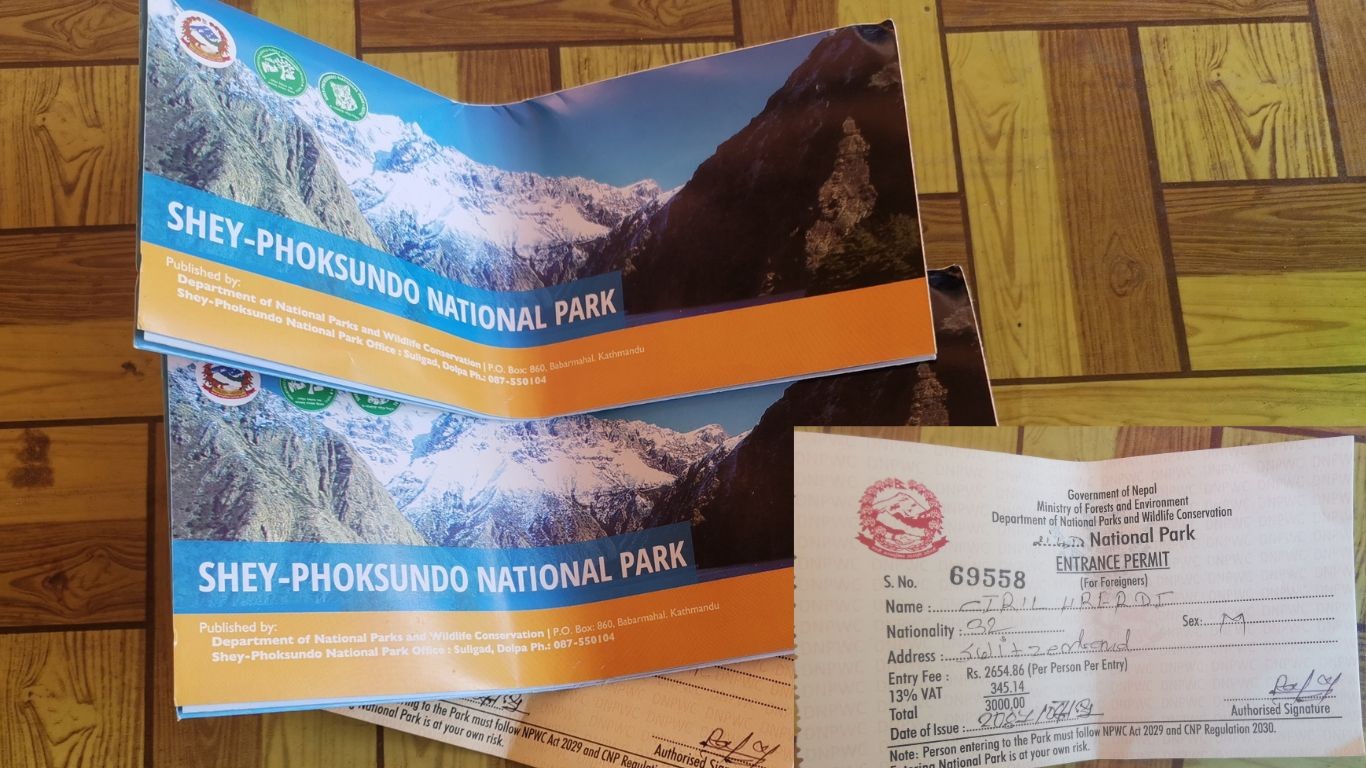
Phoksundo Lake lies in Lower Dolpa of Dolpa District. The permits you will require are the Shey-Phoksundo National Park entry permit, which will cost Rs 3000, and the Restricted area permit for the Dolpo Region, which will cost US$20 per person for foreign nationals.
Permit costs vary for SAARC and non-SAARC nationals, so check the latest rates before your trek. Permits must be obtained through a registered trekking agency in Nepal.
Major Flora and fauna
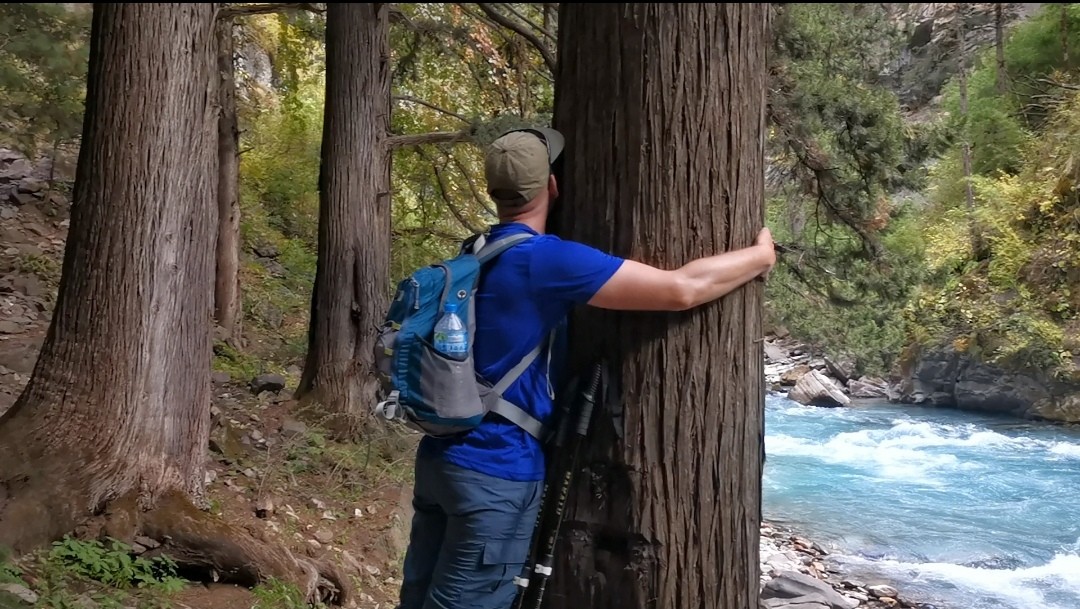
 In this section, I will mention some flora and fauna found in the whole Shey Phoksundo National Park (SPNP). SPNP harbors a prime habitat for endangered and flagship species like the Snow Leopard, Great Tibetan Sheep (Ovis ammon), Great Tibetan Wolf (Canis lupus), Tibetan Antelope (Pantholopus hodgsoni), Musk Deer, Red Panda, and Leopard Cat. Other wildlife include Blue Sheep, Ghoral, common Leopard, Himalayan Black Bear, Jackal, Common Langur, Rhesus Monkey, Yellow-throated Marten, Weasel, Marmot, Wild Boar, Barking Deer and so on. The park is home to 6 species of herpetofauna. The highest flying butterfly (Paralosa nepalaica) is recorded in the part. More than 200 avian species are reported here. Danphe (Lophophorus impejanus), Monal, Cheer Pheasant, Tibetan Partridge, White-throated Tit, and Snow cock, are some other additional bird species existing in the park.
In this section, I will mention some flora and fauna found in the whole Shey Phoksundo National Park (SPNP). SPNP harbors a prime habitat for endangered and flagship species like the Snow Leopard, Great Tibetan Sheep (Ovis ammon), Great Tibetan Wolf (Canis lupus), Tibetan Antelope (Pantholopus hodgsoni), Musk Deer, Red Panda, and Leopard Cat. Other wildlife include Blue Sheep, Ghoral, common Leopard, Himalayan Black Bear, Jackal, Common Langur, Rhesus Monkey, Yellow-throated Marten, Weasel, Marmot, Wild Boar, Barking Deer and so on. The park is home to 6 species of herpetofauna. The highest flying butterfly (Paralosa nepalaica) is recorded in the part. More than 200 avian species are reported here. Danphe (Lophophorus impejanus), Monal, Cheer Pheasant, Tibetan Partridge, White-throated Tit, and Snow cock, are some other additional bird species existing in the park.
The park is famous for the availability of non-timber forest products, especially for medicinal plants, Yarsagumba (Ophyocordiceps sinensis) is renowned for its aphrodisiac properties and is found in the meadows of the park. Moreover, the park is also famous for Shilajit a natural, tar-like substance found primarily in the rocks of the Himalayas, Tibet, and other mountain ranges. It forms over centuries from the slow decomposition of plant and microbial matter under high pressure and temperature. There is a rumor that it cures almost all diseases if it is consistently administered in small amounts.
Places to Stay Overnight during this Trek:
- Jhuphal: Small village with Airport and beautiful mountain view of Putha mountain
- Dunai: 11km from Juphal, District headquarters of Dolpo with very good hotels for overnight stay
- Kageni: 8km from Dunai, Lies between Sulighat and Syangta, many prefer this place for having lunch
- Syangta: 4.4km from Kageni, secondly overnight option for Chhepka if you can't reach Chhepka, have a teahouse same as Chhepka
- Chhepka: 2.2 km from Syangta, a camping site with a good teahouse and river flowing nearby.
- Rechi Village: 8.7km from Chhepka, a beautiful village with various teahouses, many prefer this as a lunch place
- Saijol: The best place to stay for tomorrow's hike to Phoksundo Lake with a great view
- Ringmo Village: Traditional Bon village near Phoksundo Lake.
Note: For an itinerary for Phoksundo Lake Trek contact us and visit our package page of Phoksundo Lake Trek.
Preparation Tips:
- Train your body properly before going on this trek. Train for cardio and strength exercises to prepare for long walks and steep ascents.
- High altitude sickness can affect you if elevation is gained too rapidly and without proper acclimatization. The symptoms are headache, difficulty sleeping, breathlessness, loss of appetite, and general fatigue.
- Pack essential items for the trek. Warm clothing, trekking boots, a rain jacket, a headlamp, and a first-aid kit are must-haves. Check our recommended equipment list for general information.
- Make sure you have travel insurance. Ensure your insurance covers high-altitude trekking and emergency evacuation.
Park Regulations to follow or things to Remember:
Please be informed that these points listed below are listed in the pamphlet of Shey-Phoksundo National Park, which you will get when you enter the national park.
- An entry fee of Rs. 3000 (foreigners), Rs 1,500 (SAARC Nationals), Rs 100 (Nepali) visitors and Rs. 25 for tourist porters should be paid at the designated counter.
- The entry permit is non-refundable, non-transferable, and is for a single entry only.
- Entering the park without a permit is illegal. Park personnel may ask for the permit, so visitors are requested to keep the permit with them.
- Get a special permit for documentary/filming from the Department of National Parks and Wildlife Conservation (DNPWC)
- Documentary/filming fees of US$1,500 (Foreigners), Rs 50,000 (SAARC Nationals), and Rs. 10,000 (Nepali) should be paid at DNPWC. An additional 25% should be paid while using a drone for documentary/filming.
- The drone (UAV) fee is the same as the documentary/filming fee while using it for other purposes and can get a permit from the Department of National Parks and Wildlife Conservation.
- Don't remove or damage plants and animals. All flora and fauna are fully protected and must not be disturbed.
- Rubbish must be placed out, buried, or disposed off in designated areas.
- No one should walk in the park between sunset and sunrise.
- Do respect the cultural and religious sites.
- Camping inside the park should be made only at the designated areas.
- Carry out non-biodegradable items such as batteries, plastic bags, and bottles
- Never trek alone
- A trekking permit is compulsory for foreigners and SAARC Nationals.
Book with Beyond the Limits Treks and Expedition:
At Beyond the Limits Treks and Expedition, we are passionate about creating unforgettable experiences for our clients. Whether you are a seasoned trekker or a first-timer, we will take care of all the details so you can focus on enjoying the journey. Send Us an Enquiry now.
Conclusion
The Phoksundo Lake Trek is more than just a trek—it’s a journey into the soul of the Himalayas. From the pristine turquoise waters of Phoksundo Lake to the ancient Bon culture of Dolpo, every step of this adventure will leave you in awe. Ready to make it happen? Contact Beyond the Limits Treks and Expedition today, and let’s turn your dream trek into reality.
📞 Call Us: +9779851093729
📧 Email Us: [email protected].
🌐 Visit Us: www.beyondthelimitstreks.com
More of Adventerous Trekking Destinations:

.png)



 Accommodation in the Dolpo region is basic. Phoksundo Lake Trek is one of the off-the-beaten trails of Nepal, here you would have a chance to see real Nepal with local culture and their way of life. Compared to 10 years ago, the level of accommodation has significantly increased but it is still basic. Along the trail, you will be spending overnight in simple teahouses that provide shared rooms with basic bedding. The bathroom is shared in every teahouse and hot showers are very rare. The idea of a hot shower is that you boil water, take that water in a bucket, and pour it over your body yourself.
Accommodation in the Dolpo region is basic. Phoksundo Lake Trek is one of the off-the-beaten trails of Nepal, here you would have a chance to see real Nepal with local culture and their way of life. Compared to 10 years ago, the level of accommodation has significantly increased but it is still basic. Along the trail, you will be spending overnight in simple teahouses that provide shared rooms with basic bedding. The bathroom is shared in every teahouse and hot showers are very rare. The idea of a hot shower is that you boil water, take that water in a bucket, and pour it over your body yourself. The teahouses here offer a limited but nourishing food. Nepali Traditional food Dhal-Bhat is the most common food in this trekking region. If you are not a huge fan of Dhal-Bhat, then you will have a very hard time on this trek. Every teahouse makes Dhal-Bhat for dinner with which you would also have some vegetables and if you like to add an egg you can add that too. To put it simply, there is no menu in the teahouse for you to choose from; you just order what they have in the house, and they will make it. Don't expect foods like Pizza, Momo, Spaghetti, etc.
The teahouses here offer a limited but nourishing food. Nepali Traditional food Dhal-Bhat is the most common food in this trekking region. If you are not a huge fan of Dhal-Bhat, then you will have a very hard time on this trek. Every teahouse makes Dhal-Bhat for dinner with which you would also have some vegetables and if you like to add an egg you can add that too. To put it simply, there is no menu in the teahouse for you to choose from; you just order what they have in the house, and they will make it. Don't expect foods like Pizza, Momo, Spaghetti, etc.

 In this section, I will mention some flora and fauna found in the whole Shey Phoksundo National Park (SPNP). SPNP harbors a prime habitat for endangered and flagship species like the Snow Leopard, Great Tibetan Sheep (Ovis ammon), Great Tibetan Wolf (Canis lupus), Tibetan Antelope (Pantholopus hodgsoni), Musk Deer, Red Panda, and Leopard Cat. Other wildlife include Blue Sheep, Ghoral, common Leopard, Himalayan Black Bear, Jackal, Common Langur, Rhesus Monkey, Yellow-throated Marten, Weasel, Marmot, Wild Boar, Barking Deer and so on. The park is home to 6 species of herpetofauna. The highest flying butterfly (Paralosa nepalaica) is recorded in the part. More than 200 avian species are reported here. Danphe (Lophophorus impejanus), Monal, Cheer Pheasant, Tibetan Partridge, White-throated Tit, and Snow cock, are some other additional bird species existing in the park.
In this section, I will mention some flora and fauna found in the whole Shey Phoksundo National Park (SPNP). SPNP harbors a prime habitat for endangered and flagship species like the Snow Leopard, Great Tibetan Sheep (Ovis ammon), Great Tibetan Wolf (Canis lupus), Tibetan Antelope (Pantholopus hodgsoni), Musk Deer, Red Panda, and Leopard Cat. Other wildlife include Blue Sheep, Ghoral, common Leopard, Himalayan Black Bear, Jackal, Common Langur, Rhesus Monkey, Yellow-throated Marten, Weasel, Marmot, Wild Boar, Barking Deer and so on. The park is home to 6 species of herpetofauna. The highest flying butterfly (Paralosa nepalaica) is recorded in the part. More than 200 avian species are reported here. Danphe (Lophophorus impejanus), Monal, Cheer Pheasant, Tibetan Partridge, White-throated Tit, and Snow cock, are some other additional bird species existing in the park.





